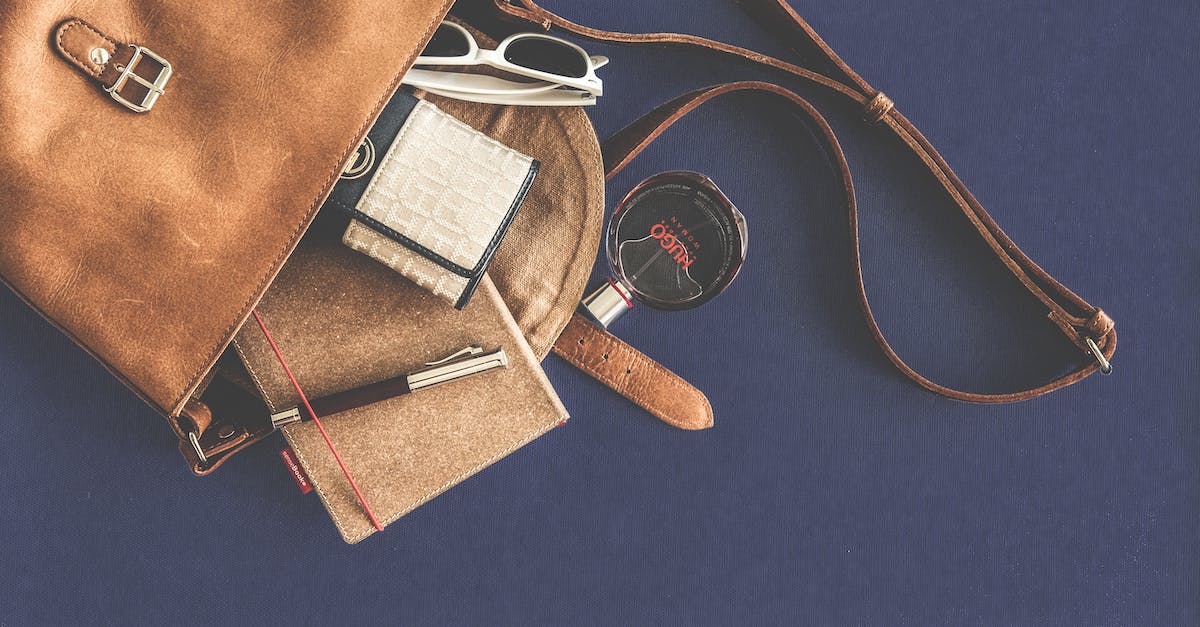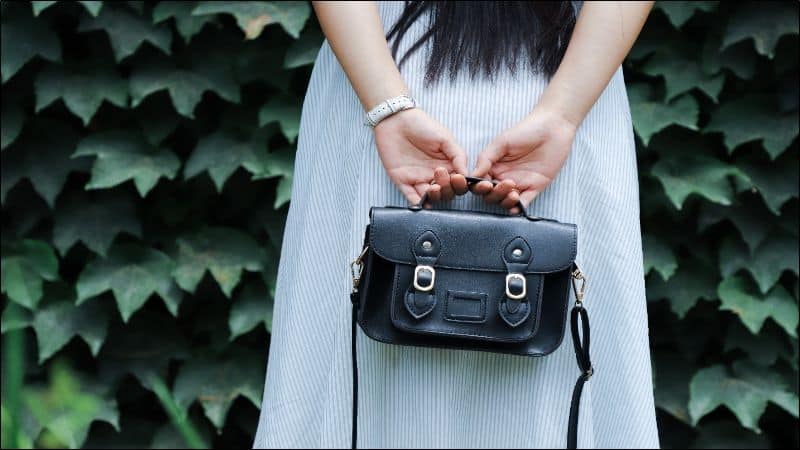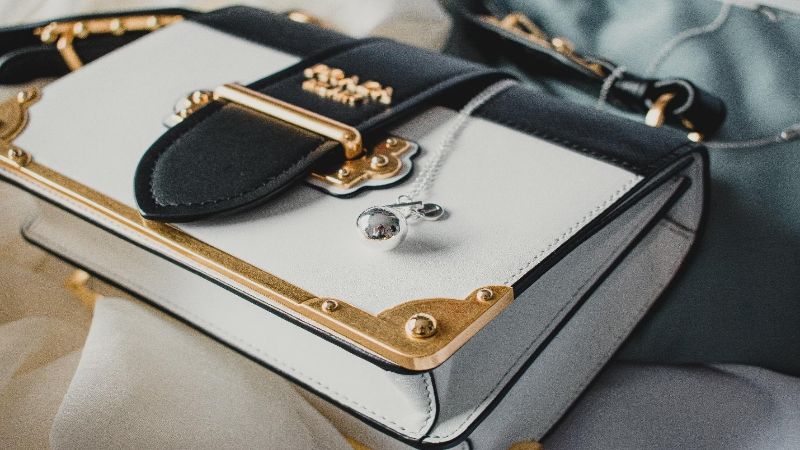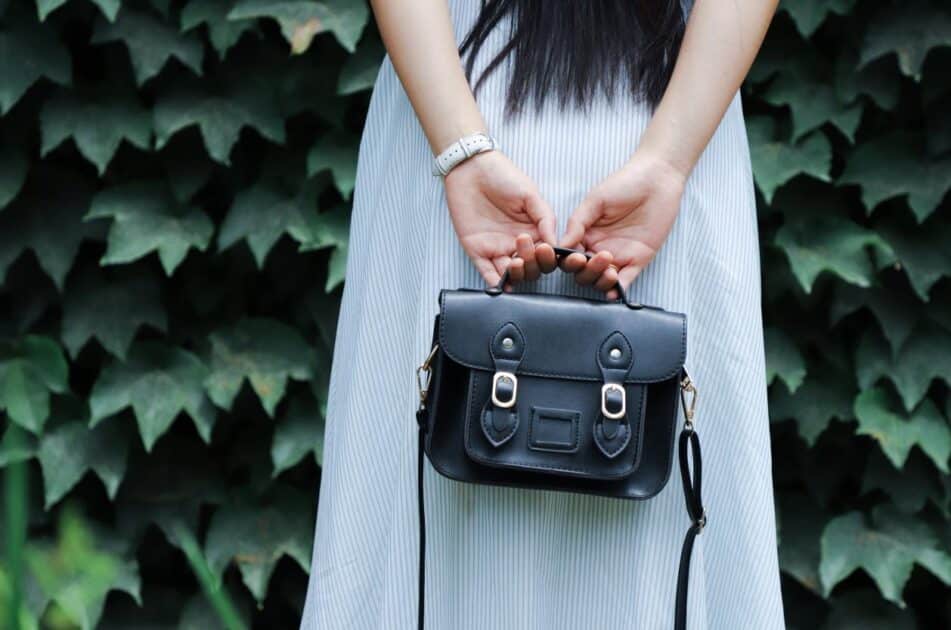Ever wondered where the sleek leather on your favorite handbag started its journey? It’s not just a fashion statement; it’s a tale of transformation. From the pastoral fields to the high-end boutiques, the leather in your handbag has had quite the adventure.

You might be surprised to learn that the leather industry is as diverse as the styles and colors of the bags themselves. It’s a global affair involving farmers, tanners, and artisans, each playing a crucial role in creating the luxurious material that ends up on your shoulder.
Tanning Process: From Hide to Leather
The transition from animal hide to luxurious leather is both an art and a science. You might not realize it, but this phase is where the distinctive texture and durability of your handbag’s leather begins to take shape.
Preparation is the first step in the tanning process. Hides are cleaned to remove hair and flesh, and soaked to restore hydration. It’s here that imperfections are identified and treated.
Next comes the actual tanning. There are two primary methods: vegetable tanning and chrome tanning. Vegetable tanning uses natural materials like tree bark and is known for producing sturdy leather with a rich patina that develops over time. On the other hand, chrome tanning, which uses a solution of chemicals, chromium salts, is quicker and gives the leather a softer, more uniform appearance.
Dyeing and fatliquoring are steps that follow, infusing the hide with color and oils to achieve the right hue and suppleness. Remember, the quality of dyes and oils will determine the leather’s final appearance and feel.
The last phase before craftsmanship begins is finishing. This may involve adding a protective coat, embossing patterns, or creating a matte or glossy surface. Every choice at this stage will define the character of your handbag.
| Tanning Method | Materials Used | Resulting Leather Characteristics |
|---|---|---|
| Vegetable | Tree bark, plant tannins | Durable, develops patina |
| Chrome | Chromium salts, chemicals | Soft, uniform appearance |
Ultimately, the tanning process underscores the importance of balancing tradition with technology. Both methods have their own merits, and the choice often depends on the desired outcome for the leather’s use in handbags.
The Origins of Leather: Where Does it All Begin?
Beneath the glossy finish of your favorite handbag lies a history as rich as its texture. Leather’s journey begins long before it reaches the shelves of high-end boutiques. It starts with the raw materials — primarily cowhide, but also sheep, goat, and exotic animal skins are utilized. These hides are byproducts of the meat and dairy industries; sourcing them is a blend of ethical practices and sustainability measures.
At the farm level, responsible cattle rearing is key. Farmers breed and raise livestock, ensuring their well-being translates into high-quality hides. After the animals are butchered for meat, the skins are salvaged. It’s a practice as old as human civilization, dating back to when early humans hunted for food and used the hides for shelter and clothing.
Leather trade routes have shaped economies for centuries. The exchange is global, with leather traveling great distances before being transformed into the accessory you love. Tanneries across the world bid for the best hides, their buying choices influenced by grain quality, thickness, and size.
Animal hide characteristics vary widely, influenced by:
- The animal’s diet
- Climate and geographical region
- Breed-specific traits
These distinguishing features impact the hide’s texture and durability. Tanneries aim to preserve these inherent qualities while enhancing the leather through tanning methods perfected over time.
The luxury handbag you carry is the end product of traditional craftsmanship and modern innovation. Each hide is meticulously transformed, reflecting a heritage of artisan skill and contemporary design philosophy. As leather progresses from raw material to finished product, it carries with it a narrative of human tradition, innovation, and artful expression.
The Role of Farmers in the Leather Industry
As a handbag enthusiast and an expert in the fashion industry, you’re aware that the journey of a luxury handbag begins long before it hits the runway. It starts on a farm, with the people who raise the livestock.
Farmers play a critically underrated role in the leather supply chain. They’re responsible for the welfare of animals whose hides eventually become your cherished handbags. Their choices influence the quality of leather as much as the craftsmen who later work on them.
You may not think about it, but each handbag tells a tale of agricultural expertise. Here’s why:
- Responsible rearing practices ensure the health of livestock which directly transitions into unblemished, high-quality hides.
- Feed and environment managed by farmers contribute to the unique textures and durability of the leather.
- Sometimes, subtle differences in breed-specific characteristics can be spotted in the grain of your leather bag.
Perhaps you’ve marveled at the subtle differences in texture or how certain leathers stand the test of time. Thank farmers for their meticulous genetics selection and breeding strategies. These are designed to optimize hide quality, from smoother finishes to distinctive patterns that you adore.
In a market driven by consumers demanding sustainability and ethical production, farmers’ environmental stewardship is vital. They’re shifting toward eco-friendlier practices, cutting down the carbon footprint of your handbags.
« Can You Take a Handbag and Hand Luggage on a Plane? Maximize Your Carry-On
Handbag and Hand Luggage: Pack Smart & Avoid Extra Fees »
Your investment in a quality handbag isn’t just a fashion statement. It’s a nod to the agricultural practices that support an industry striving for excellence. So next time you drape a leather handbag over your shoulder, remember the agrarian roots that support its luxury and lasting appeal.
The Art of Tanning: Secrets of Leather Making
Tanning is the pivotal step in leather crafting. It’s what transforms perishable hide into durable, ageless leather. Vegetable tanning and chrome tanning dominate the scene, each bringing unique qualities to the table.
In vegetable tanning, tannins from tree bark brew into the hide, creating firm and earthy-toned leather. This process is slow, typically taking weeks, but it’s prized for its eco-friendliness and rich patina. Leather artisans favor it for high-end goods. On the flip side, chrome tanning uses a solution of chemicals including chromium sulfate. It’s much faster, often completed in a single day, and yields softer, more colorful leather.
Here’s what you need to know about these methods:
- Vegetable Tanning:
- Ideal for full-grain leather
- Results in a unique patina over time
- Eco-friendlier choice
- Chrome Tanning:
- More water-resistant
- Offers a wider color range
- Preferred for a softer finish
The choice of tanning method can affect the hide’s texture, color, and durability, all of which are crucial in handbag leather selection.
Post-tanning, the leather must be thinned, re-tanned, and lubricated. This stage is crucial for achieving the desired softness and hue. Finally, the leather is finished with techniques such as buffing or applying pigments, which determine the look and feel you adore in a handbag.
Craftsmen often guard their specific tanning recipes and techniques closely – they’re trade secrets passed down through generations. These practices are not just procedures but are revered as an art form. They’re a testament to the artisan’s skill and the quality of the handbag that’ll grace your shoulder.
Leather Types: Exploring the Different Varieties
As you delve deeper into the world of handbags, you’ll encounter various types of leather, each with its unique characteristics and uses. Knowing these differences is crucial for making informed choices about the quality and style of your handbags.
Full-grain leather is the gold standard for handbags. It’s the most natural form, taken from the top layer of the hide with all the grain. Its hallmarks are durability and an ability to develop a rich patina over time.
Moving on, there’s top-grain leather which is similar to full-grain but with a slight tweak. The surface is sanded down to remove imperfections, making it thinner and more pliable. This processing allows for a more uniform finish.
If you’re looking for something more affordable, genuine leather might be the term you’ve encountered. It’s not a specific type but rather a catch-all term for leathers that don’t fit into the higher categories. These are often made from the remaining layers of the hide and have an artificial grain applied to their surface.
For a modern twist, there’s bonded leather, which is made from the scraps of other leather types. These pieces are bonded together with adhesives to form a single material. It’s less durable but can be a cost-effective option.
Luxury handbags often boast exotic leathers from animals like crocodiles, ostriches, or snakes. These leathers are prized for their distinct textures and patterns but are typically more expensive and involve stricter regulations due to conservation efforts.
Let’s not forget suede, recognized by its napped finish. It’s crafted from the underside of the animal skin, making it softer but less durable than full-grain leather. Suede adds a touch of softness to the structure and aesthetic of handbags.
No matter what type you choose, each has its place in the realm of handbag crafting. From the premium touch of full-grain to the cost-effective alternatives, your preferences and needs will guide your selection.
Conclusion
So now you’ve got the scoop on the journey from pasture to purse. You’ve seen how the leather in your handbag has been carefully crafted through a blend of tradition and innovation. Next time you’re admiring a beautiful leather handbag, you’ll appreciate not just its style but the intricate process behind it. Remember, the type of leather and the craftsmanship define the personality of your accessory. With this knowledge, you’re all set to make choices that reflect both your style and your values. Keep this in mind and you’ll not only look good but feel great about your fashion statements!
Frequently Asked Questions
What are the primary methods of leather tanning?
The primary methods of leather tanning are vegetable tanning, which uses natural materials like tree bark, and chrome tanning, which uses a solution of chemicals, predominantly chromium sulfate.
Where does leather material originate from?
Leather material primarily originates from the hides of animals from the meat and dairy industries. Responsible cattle rearing practices contribute to the quality of the resulting leather.
How does the characteristics of an animal impact leather?
The characteristics of an animal, such as age, breed, and the conditions it was raised in, significantly impact the texture, thickness, and durability of the leather produced from its hide.
What are the different types of leather used in handbags?
The different types of leather used in handbags include full-grain leather, top-grain leather, genuine leather, bonded leather, exotic leathers, and suede, each with unique characteristics and uses.
Why is it important to know the different types of leather when choosing handbags?
Knowing the different types of leather is important when choosing handbags because it aids consumers in making informed decisions about the quality, durability, and style of the product they are investing in.










